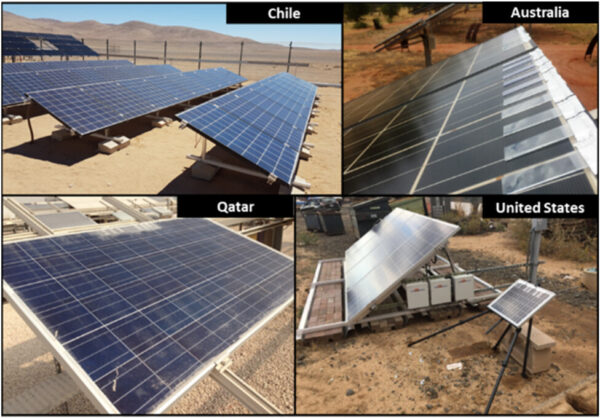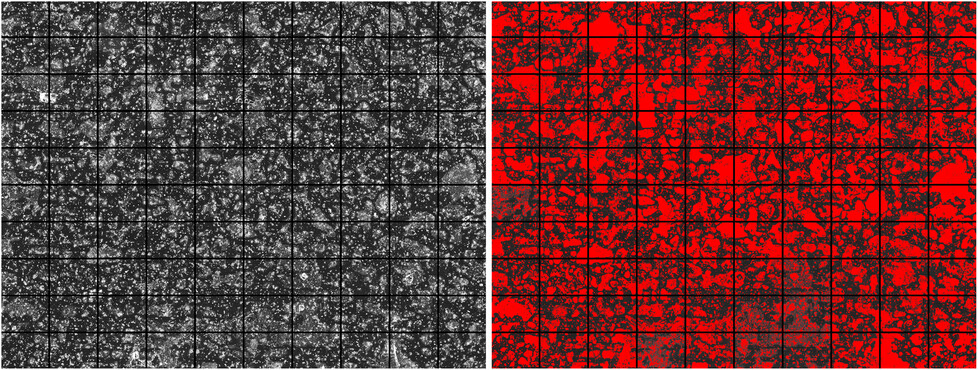An international group of scientists has conducted research to identify the most robust and reliable thresholding method in image analysis of soiling on PV panels. Thresholding is the process that converts a micrograph into a binary black and white image, corresponding to particle and background. It does so by setting a threshold for pixel brightness.
“Image analysis has often been used to characterize the soiling accumulated on glass coupons,” the research lead author, Leonardo Micheli told PV magazine.
“However, different options in the image analysis methodology can lead to dissimilar results for the same micrograph, even if the software is the same,” added research co-author, Greg P. Smestad. “This is in part due to the absence of a standardized method. So, we decided to look at the uncertainty that the image analysis process can introduce in the estimations of soiling for real-world conditions.”
The research has looked into 16 thresholding methodologies, all available through the ImageJ software, which is a Java-based image processing program developed at the University of Wisconsin's National Institutes of Health and the Laboratory for Optical and Computational Instrumentation (LOCI).
The methods are called Default, Huang, Intermodes, IsoData, Li, MaxEntropy, Mean, MinError, Minimum, Moments, Otsu, Percentile, RenyiEntropy, Shanbhag, Triangle and Yen. To perform the analysis, the researchers produced 13,200 micrographs of glass coupons soiled for 1 to 32 days. They were collected from Algeria, Australia, Chile, Jordan, Cape Verde, Morocco, Qatar, Spain and the United States.
The results of the various thresholding methodologies were then compared in terms of the coefficient of variation and the relative deviation from the average. In addition, a survey was conducted among 18 soiling experts to assess the reliability of the different methodologies visually.
“Overall, the ‘Triangle' method appears to be the best option among the investigated methodologies for the soiling conditions analyzed in this study,” the academic group found. “Indeed, it returns the minimum coefficient of variation and a mean deviation closer to zero. It was also one of the two methods that were most often selected as best by the participants in the survey.”

Image: Sapienza University of Rome, RRL Solar, CC BY 4.0 DEED
According to the researchers, the Triangle method sets the threshold as the point of maximum distance between the pixel intensity histogram and the line between the histogram peak and the farthest end of the histogram. “Due to its approach,” they explained, “this algorithm is particularly well suited for images with a dominant background, as in these cases and in most soiling studies.”
Then, using the excelling Triangle thresholding method, the scientist moved forward to investigate the effect of the nonuniform distribution of soiling on the glass coupons. As soiling is not uniformly distributed over a PV panel, micrographs taken at different spots on the same coupon might return different results.
“It was found that, in order to keep the estimation error lower than +/- 5%, more than one micrograph should be taken per coupon,” the scientists concluded. “The recommended number of measurements typically increases with the soiling loss, and therefore it can be expected to be higher: 1) in locations with high soiling levels, and 2) as the number of days of exposure increases.”
All results were presented in “Soiling in Solar Energy Systems: The Role of the Thresholding Method in Image Analysis,” published on Solar RRL.
The research team includes scientists from Italy's Sapienza University of Rome and Polytechnic University of Milan; the USA's Sol Ideas Technology Development, University of California, Riverside; Germany's Fraunhofer Center for Silicon Photovoltaics CSP, Fraunhofer Institute for Microstructure of Materials and Systems IMWS, Anhalt University of Applied Sciences, Leipzig University of Applied Sciences.
It also comprises researchers from Morocco's Green Energy Park Research, University Mohammed Premier; Australia's Queensland University of Technology; Norway's Norwegian Research Centre (NORCE); the Qatar Environment and Energy Research Institute; India's Indian Institute of Technology Bombay; the United Arab Emirates' University of Sharjah; the UK's University of Derby; Chile's University of Antofagasta; and Germany's DLR German Aerospace Center.
This content is protected by copyright and may not be reused. If you want to cooperate with us and would like to reuse some of our content, please contact: editors@pv-magazine.com.



By submitting this form you agree to pv magazine using your data for the purposes of publishing your comment.
Your personal data will only be disclosed or otherwise transmitted to third parties for the purposes of spam filtering or if this is necessary for technical maintenance of the website. Any other transfer to third parties will not take place unless this is justified on the basis of applicable data protection regulations or if pv magazine is legally obliged to do so.
You may revoke this consent at any time with effect for the future, in which case your personal data will be deleted immediately. Otherwise, your data will be deleted if pv magazine has processed your request or the purpose of data storage is fulfilled.
Further information on data privacy can be found in our Data Protection Policy.